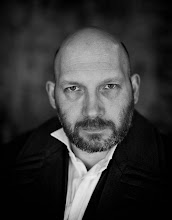
I’ve been thinking a lot about story construction recently and the business of how a tale gets from its beginning to the moment when the narrative reaches its conclusion.
In particular, I’ve been thinking about those moments when the narrative tends to stick and refuses to budge. Now, if you’re the sort of writer who plans everything well in advance and works out every possible nuance and plot turn this might not be a problem, but since I’m not really that sort of writer it happens to me with alarming (and inevitable) regularity.
There are two great pieces of advice for unsticking narrative. The first is Raymond Chandler’s “When in doubt, have a man come through a door with a gun in his hand” and the second comes from the Broadway producer George Abbott via the great William Goldman: “Have them do something. That way we’ll have something to change.”
In essence, both are about moving the story forward and keeping a narrative momentum (although Abbott’s was in response to a choreographer who wailed, “I just can’t figure out what to do next,” it’s still a good motto for a writer.). When the man with the gun comes through the door it forces the protagonist to react in some way and, as long as things are progressing logically, is a convenient way of getting from Point A to Point B. This can be literal if the protagonist is subsequently bundled into a car and taken to Point B, wherever that may be, or more metaphorical if said gunman is delivering news rather than hot lead. Thirdly, of course, it could simply be the jumping off point for some violence, but that violence in itself can provide the impetus for further plot development.
To use a rather tangential example, it’s the moment in Carry On Cowboy where Sid James’ Rumpo Kid guns down three pistoleros in the street and then says “I wonder what they wanted”. This question is never answered in the film since the incident is just there to spoof western clichés, but equally could send a story off in any number of different directions. Why did they want to kill him? Why did it take three of them? What secret is Rumpo hiding or what does he have that’s worth killing for? What will the law do now? Or, to put it another way, there are a lot of possibilities to be explored as a result of the man coming through the door with a gun.
Of course, none of the three elements – the gun, the door and the man - need necessarily be present, since any kind of event or character or item can move the story forward as long as it doesn’t jar. In Philip K. Dick’s novel Now Wait For Last Year the metaphorical man with the gun is the hallucinogenic drug JJ-180 which impels the characters forward, in Iain Bank’s The Wasp Factory it is the phone calls from Eric which serve the same purpose and in Henry James’ magnificent The Turn of the Screw is the periodic appearances of Quint and Miss Jessel that lead the narrator deeper and deeper into the terrifying world of her two small charges.
George Abbott’s words are a little more straightforward in their interpretation, but lean more towards the actions of the characters than the vagaries of the plot. With Abbott’s ‘have them do something’ the caveat should always be ‘as long as it makes sense for the character to do so’. To use that old chestnut: a coward isn’t simply going to turn into a hero for no good reason. In the same way that Chekhov’s Gun applies to physical items ("If in the first act you have hung a pistol on the wall, then in the following one it should be fired. Otherwise don't put it there."), it can also apply to the actions and motivations of characters. To return to our hypothetical coward, it can mean that there comes a time when he has no choice but to face up to his or her fears, but the seeds of this need to be planted earlier in the story.
Essentially, though, ‘have them do something’ means exactly what it says’. If it doesn’t work, or doesn’t make sense, then have them do something else until it does work.
I recently completed a short story working upon the twin techniques of ‘doing something’ and ‘the man with the gun’. Now, it may not be the greatest short story ever written (in fact, chances are that it isn’t) but as an exercise in narrative and plot movement it was extremely valuable.
At the first moment I found myself stuck, I had two men walk through the door (carrying swords rather than guns, it must be said, since it was a fantasy story) and discovered that this sent the narrative (rather than the plot) moving along rather nicely since the protagonist suddenly found himself in danger.
Similarly, a later impasse in the same story was solved by having the protagonist react to his situation (or, to put it another way, to actually do something) rather than exist as a passive narrator.
The finished article still requires a certain amount of rewriting and backtracking in order to smooth out some of the bumps but nonetheless during the writing it carried itself through to the end relatively smoothly.
Ultimately, of course, these techniques are not ideal for every story – or indeed for every writer – but they can help to jump start a stalled narrative and perhaps even take the plot in an unexpected direction.
And if you can surprise yourself then chances are you can surprise the reader as well.








